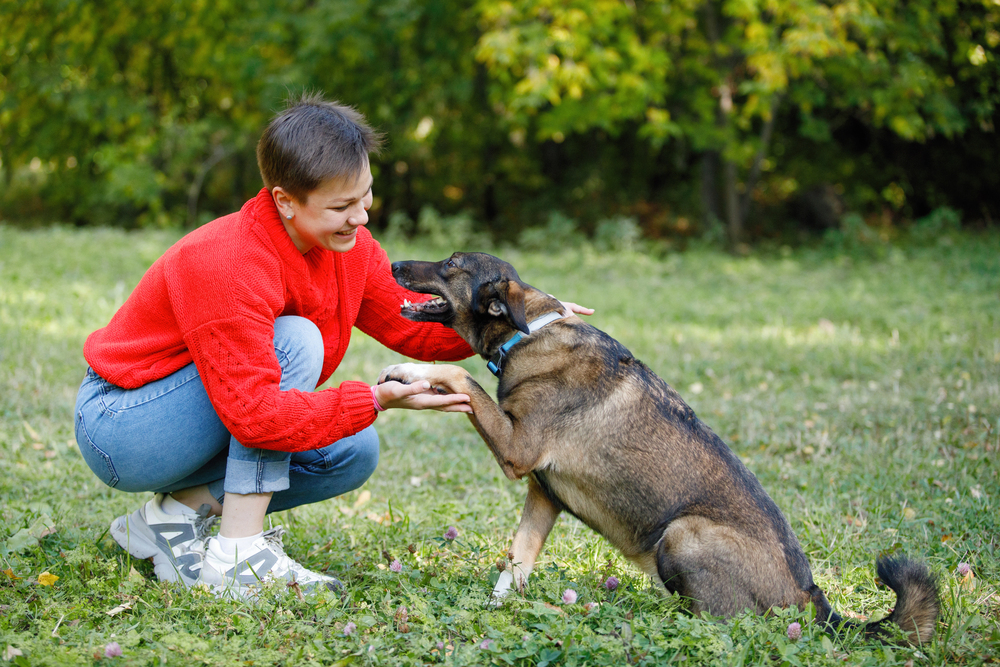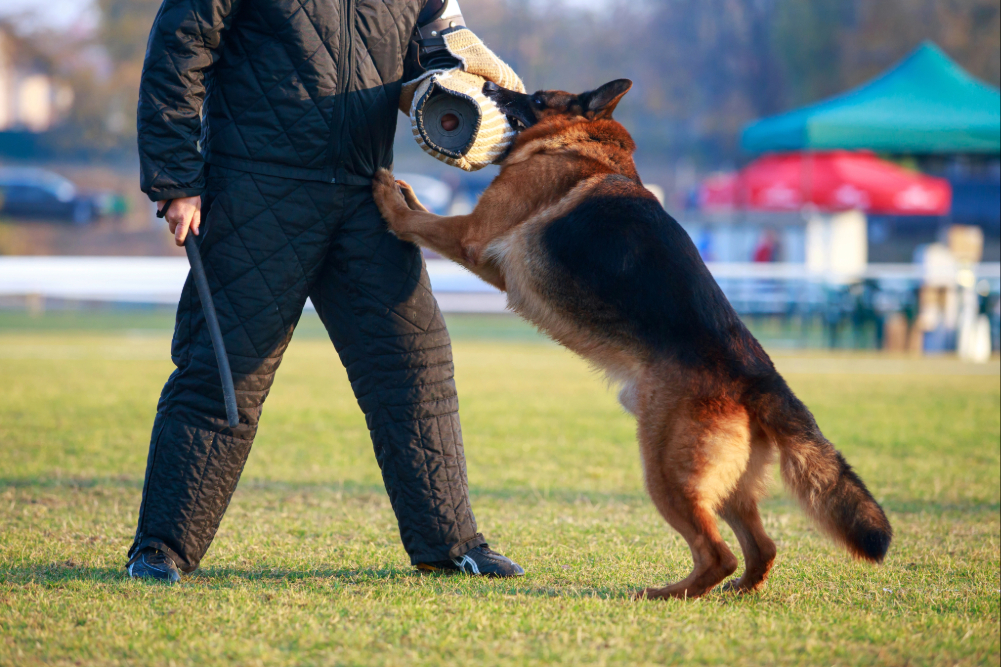
Dogs don’t come pre-programmed with patience. They rely on instinct- chasing, jumping, and grabbing whatever catches their attention. Without structure, this impulsive behavior can lead to frustration and chaos. Impulse control dog training reshapes how dogs process decisions, helping them think before they act.
With the right training, dogs learn to slow down, think, and respond instead of acting on every impulse. Professional techniques help turn excitable dogs into calm, focused companions who can handle real-world distractions with ease.
The Foundation of Impulse Control
Dogs act based on immediate desires. They lunge at distractions, snatch food, and react to sudden movement. These actions stem from instinct rather than conscious thought. Training reshapes how dogs process these situations, replacing such reactions with more calculated responses. Professional methods introduce structure, reinforcing the habit of waiting before acting.
Repetition plays a major role in this process. Trainers use controlled exercises to reinforce patience, guiding dogs toward improved decision-making. Every interaction builds on the last, strengthening the dog's ability to regulate impulses in various scenarios.
Training Techniques to Develop Self-Control
Professional trainers use proven methods for dog behavior modification. Structured training sessions focus on delaying gratification and maintaining focus in stimulating environments. Techniques include leash drills, boundary reinforcement, and reward-based conditioning.
Leash exercises teach dogs to resist sudden urges. They learn that pulling toward distractions achieves nothing. Instead, calm behavior earns movement forward. This method reinforces discipline and patience. Over time, dogs associate self-control with positive outcomes, making restraint their natural response.
Boundary training establishes physical and mental barriers. Dogs learn to respect invisible limits, waiting for permission before proceeding. This applies to doorways, crates, and food bowls. Consistent reinforcement solidifies the lesson, teaching dogs that self-control leads to rewards.
Exposure to Distractions
Dogs thrive on exposure-based training. Controlled scenarios introduce them to real-world distractions, forcing them to practice restraint. Structured exposure builds tolerance and focus.
Trainers start with mild distractions, such as stationary objects or distant noises. Once dogs show control, they move on to more challenging environments. Moving stimuli, loud sounds, and other animals create realistic conditions. The goal is for dogs to remain composed no matter what occurs around them.
Each session increases difficulty while maintaining a controlled setting. Progression must be gradual, avoiding situations that overwhelm the dog. Proper pacing prevents frustration and strengthens confidence in handling distractions.
Managing Overexcitement and Reactivity
Overexcited dogs struggle with self-control. They react to stimuli without hesitation, making walks, greetings, and daily routines stressful. Training redirects energy into calm responses rather than frantic reactions.
Impulse control drills reshape behavior by rewarding patience. Trainers use structured wait times before allowing movement. For instance, a dog excited to chase a ball must remain seated until released. The delay reinforces discipline. Repeated exposure conditions dogs to anticipate waiting rather than acting impulsively.
Leash manners also play a key role. Reactivity often stems from excitement or frustration. Teaching a dog to walk without pulling helps instill patience. Frequent stops, direction changes, and rewards for loose-leash walking all contribute to impulse control. Over time, the dog associates steady movement with positive reinforcement, reducing erratic behavior.
Redirecting Impulse Through Training Games
Training games make impulse control an engaging challenge. Professional dog trainers incorporate structured exercises that reinforce patience and focus. Games such as 'leave it,' controlled tug-of-war, and delayed fetch force dogs to process decisions before acting.
The 'leave it' exercise teaches dogs to resist temptation. A treat or toy is put in front of them, but they must wait for permission before taking it. Dogs quickly learn that patience earns rewards while lunging leads to nothing.
Controlled tug-of-war reinforces structured play. The game stops the moment the dog becomes overly aggressive or disregards commands. This teaches the dog that rough play results in lost privileges, reinforcing the need for restraint.
Delayed fetch builds focus. Instead of chasing a thrown ball immediately, the dog must wait for a release cue. This strengthens impulse regulation while adding a rewarding element to training.
The Lasting Benefits of Structured Training
A dog trained in impulse control becomes a reliable companion. Daily life improves when a dog no longer reacts unpredictably. Controlled behavior makes outings, visits, and home life more manageable.
Long-term practice strengthens neural pathways, making impulse control second nature. Dogs instinctively pause before reacting, reducing unwanted behaviors. They listen more attentively, respect boundaries, and remain focused even in high-energy situations.
Handlers benefit from reduced stress, knowing their dog will respond appropriately in any scenario. Training leads to mutual trust, allowing dogs more freedom while maintaining structured behavior.
DIY Dog Training vs. Professional Help
Many owners attempt impulse control training at home, but the results vary. Professional trainers structure lessons to build gradual success. Without expert guidance, owners may struggle with inconsistency, unclear expectations, or reinforcement mistakes.
Trainers analyze individual behaviors, tailoring exercises to each dog’s needs. They recognize subtle signs of progress or resistance, adjusting methods accordingly. This personalized approach leads to lasting results. In contrast, unstructured training may reinforce bad habits due to unclear communication or improper reinforcement timing.
Investing in professional dog training accelerates progress. It builds strong foundations that prevent future behavioral issues. Structured programs reinforce discipline, teaching dogs to think before they act rather than relying on immediate gratification.
The Power of Patience
Impulse control training revolves around patience. Dogs are naturally reactive, but structured exercises teach them to pause before responding. Trainers work on increasing a dog's tolerance for waiting, reinforcing that patience leads to positive outcomes. A dog that learns to delay gratification develops better problem-solving skills and emotional regulation.
One method involves controlled-release exercises. For example, a dog must sit and wait before receiving meals, toys, or access to outdoor spaces. Over time, waiting becomes a habit rather than a forced behavior. Trainers also focus on verbal markers that signal when a dog should proceed. These cues provide clarity, helping dogs understand expectations.
When handlers consistently reinforce patience, dogs develop stronger impulse control in everyday settings, reducing frustration-based behaviors and improving overall temperament.
Managing Impulse Control in High-Drive Working Dogs
High-drive dogs, such as herding breeds, police K9s, and sporting dogs, have intense focus and energy. While this makes them excellent workers, it also means they need more rigorous impulse control training. Without guidance, these dogs may chase moving objects, react overzealously to stimuli, or struggle with frustration.
Structured impulse control drills balance their natural intensity with discipline. Exercises like controlled fetch, extended place commands, and off-leash recall reinforce focus and restraint. Trainers often use delayed reinforcement strategies, making high-drive dogs work harder before receiving rewards. This teaches them to remain engaged even when gratification is postponed.
By mastering impulse control, working dogs become more effective in their roles. They stay alert but measured so their instincts serve a purpose rather than leading to disruptive behavior.
Strengthening Impulse Control at Home
Consistency in reinforcement plays a key role in maintaining results. Handlers must continue practicing structured techniques in daily interactions. Reinforcing patience in routine activities strengthens long-term discipline.
Simple adjustments make a difference. Dogs should wait before meals, pause before exiting doors, and resist jumping during greetings. These habits reinforce impulse control without formal training sessions. Maintaining a predictable structure helps dogs apply lessons to everyday life.
Training should remain engaging. Incorporating structured games, reward-based conditioning, and controlled exposure exercises helps keep dogs sharp. Ongoing reinforcement prevents regression and reinforces learned behaviors.
Personalized Dog Training Programs in Northern Virginia
Impulse control training helps dogs regulate their actions more effectively. Structured reinforcement builds patience, making dogs easier to manage in any situation, while professional training accelerates results, shaping dogs into reliable companions.
At Controlled K9, we believe training has the best results when tailored to each dog's unique needs. Unlike generic training programs, we assess every dog individually and design a customized plan that works best for both the dog and their owner.
Our expertise extends beyond basic obedience—we specialize in training high-drive and challenging dogs. With experience in protection dog sports, we bring advanced skills to every case, ensuring a structured and results-driven program. We limit the number of dogs we train at a time, ensuring each one receives the attention and effort they deserve.
Our involvement does not stop once training is over. We offer unlimited private lessons after our board and train program at no extra charge. No other company provides this level of ongoing support. We remain a resource for as long as needed, ensuring lasting success for both dog and owner.
Located in Gainesville, VA, we are committed to transforming dogs into well-behaved, confident companions. Contact us today to start your dog’s journey toward better impulse control and lasting obedience.




Comments